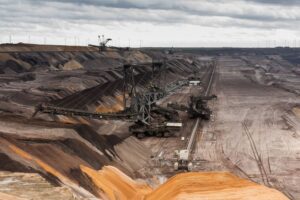Brisbane Broncos: The Only Listed Sports Club — Can the Momentum Sustain?
![]() Ujjwal Maheshwari, October 17, 2025
Ujjwal Maheshwari, October 17, 2025
When the Brisbane Broncos (ASX: BBL) lifted the NRL Premiership trophy in 2025, the roar from Suncorp Stadium wasn’t confined to Queensland; it echoed straight onto the trading screens of the Australian Securities Exchange. Within just 24 hours, the club’s market value surged by nearly $50 million, as investors rushed to own a slice of Australia’s only publicly listed sports team (ASX: BBL). It was the kind of market reaction usually reserved for mining discoveries or tech IPOs, not a rugby league victory. For a few days, the Broncos weren’t just champions on the field; they were the talk of the ASX.
Yet, as the confetti settled and the headlines faded, a bigger question emerged: can this momentum truly last? The Broncos are not an average sports team. They sit at a rare intersection of passion and profit, operating as both an elite sporting brand and a publicly traded entertainment business. As the euphoria fades, investors are asking whether this unique hybrid model can keep delivering, both for fans and for shareholders.
What are the Best ASX stocks to invest in right now?
Check our buy/sell tips
The Business Behind the Brand
The Broncos’ success has always been built on more than tries and tackles. As a business, it runs multiple revenue streams that together form one of the most sophisticated sporting operations in Australia. For the full year ending December 2024, the Brisbane Broncos reported revenue of approximately $81.6 million, compared with $74.6 million in the previous financial year. That growth was driven by stronger match-day attendances, higher merchandise sales, and larger NRL grant distributions following the team’s rise back to dominance.
Match-day operations remain the financial backbone. Suncorp Stadium, often sold out on game day, generates income through ticket sales, hospitality, concessions, and premium experiences. Memberships add another stable stream, with over 40,000 active members, and the club enjoys one of the largest supporter bases in Australian sport. When the team performs, membership renewals rise, and so does every line of revenue attached to fan engagement.
Sponsorship is another key pillar. Backed by major partners in finance, automotive, and energy, the Broncos benefit from multi-year deals that grow in value during successful seasons. Media and broadcast revenues, channelled through the NRL’s centralised rights agreements, provide predictable income and act as a stabiliser when the team hits a rough patch. And then there’s merchandise, where championship seasons fuel online and in-store demand for jerseys, scarves, and memorabilia. For many fans, buying the latest kit isn’t just support; it’s an investment in identity.
In essence, the Broncos aren’t merely a football club; they are a sports-entertainment enterprise, monetising loyalty across every touchpoint – stadium, screen, and store.
Financial Health: Strong Cash, Modest Margins, and Rare Stability
Public transparency has long been one of the Broncos’ biggest advantages. Their FY 2024 results recorded a net profit after tax of $5.72 million on revenue of $81.6 million, slightly lower than the previous year’s $6.2 million. It’s not explosive growth, but it reflects a disciplined cost structure and steady margins despite inflationary pressures across operations and wages.
The company’s 2024 annual report lists total assets at around $73 million, with minimal debt obligations, a strong position compared to most privately funded sports teams. Cash reserves are strong, providing flexibility to reinvest in digital expansion, player development, and fan-engagement programs without taking on leverage.
Operating cash flows are consistently positive, reflecting a model that converts fan enthusiasm into real financial stability. With most costs fixed, stadium leases, staff, travel, and administration, any incremental revenue from sponsorships or merchandise often flows straight to the bottom line. The downside, of course, is that costs also move up with performance: better teams require higher-paid players and greater investment in facilities. But unlike other NRL clubs that struggle to break even, the Broncos are generally profitable in most years, even when they miss the finals.
A Market Reaction Worthy of a Grand Final
After the 2025 NRL Grand Final win, ASX: BBL shares jumped by over 50%, pushing its market capitalisation to around $180 million. Trading volumes tripled as fans-turned-investors looked to capitalise on the feel-good story. This phenomenon is not unique to Brisbane. Globally, listed sports clubs such as Manchester United (NYSE: MANU) or Juventus (BIT: JUVE) have experienced similar spikes after winning titles or signing superstar players. But such rallies tend to fade once the season resets and investors refocus on fundamentals.
At current levels, analysts note that the Broncos’ valuation reflects a clear ‘fan premium’, its share price often trades above what fundamentals alone might justify, driven by emotional investor interest. However, this also means expectations are high. A mediocre season could swiftly erode the market’s enthusiasm, and unlike mining or manufacturing, the Broncos can’t drill or engineer their way out of a form slump.
Risks That Could Test the Hype
Owning a sports club stock is not like owning a bank or an energy company. The Broncos’ fortunes hinge on both human performance and emotional economics.
On-field volatility remains the most immediate risk. If the team underperforms, gate takings, memberships, and merchandise sales all decline. Sponsors tend to renegotiate or reduce exposure during lean years, compounding the impact.
Then there are rising costs, player salaries, travel, facility upkeep, and staff expenses. While the NRL’s salary cap offers some control, the best talent comes at a premium, and success breeds expectation. Inflation has also pushed up stadium-related costs and marketing expenditure.
Commercial saturation presents another hurdle. Queensland’s sporting landscape is crowded, with AFL, cricket, and soccer competing for eyeballs and corporate dollars. While the Broncos’ brand dominates rugby league, they must continue innovating digitally to capture younger fans whose entertainment habits are shifting online.
Lastly, governance and regulatory oversight are more stringent for a listed entity. ASX disclosure rules demand transparency, and any misstep, from financial irregularities to off-field controversies, can damage reputation and investor confidence alike. In short, sustaining momentum requires not just great coaching but great corporate execution.
Catalysts: What Investors Should Watch Next
If the 2025 Grand Final was the spark, the next few seasons will determine whether the fire burns brighter or fades. Investors should keep a close eye on a few telling indicators.
First, membership retention and growth. Maintaining numbers above 40,000 would confirm that the surge in engagement wasn’t just a one-season bounce. Sustained membership expansion is the clearest sign that fan passion is translating into stable recurring revenue.
Second, sponsorship renewals and expansions. The club’s recent success gives it leverage to renegotiate premium contracts. Securing a new headline partner or extending existing deals on favourable terms would signal commercial strength.
Third, the NRL’s next broadcast rights cycle, which could deliver a step-up in central distributions. A larger media deal would directly lift the Broncos’ share of league revenues and underpin longer-term profitability.
Fourth, digital and merchandise performance. Post-title seasons tend to drive online sales spikes, but the test will be whether the club can retain e-commerce momentum by expanding into overseas markets, especially in New Zealand and the Pacific.
Finally, on-field stability, the retention of star players and continuity in the coaching staff will be crucial. In the NRL, consistency is everything. A repeat top-four finish would not only delight fans but also reassure the market that 2025 wasn’t an anomaly.
How the Broncos Compare Globally
The Broncos’ business model mirrors that of listed global clubs such as Borussia Dortmund (ETR: BVB), Juventus, and Manchester United. Like them, Brisbane converts broadcast revenue, sponsorships, and merchandising into profits while leveraging emotional loyalty to sustain value. But unlike these European giants, the Broncos enjoy a uniquely stable environment: the NRL’s franchise system eliminates relegation risk, ensuring a guaranteed presence and share of league revenue every year.
That structure gives the club a financial floor that its European counterparts lack. However, it also caps upside; there’s only so much market share available in Australia’s 26-million-strong population. For true long-term growth, the Broncos will need to scale digitally and globally, perhaps by exporting their brand through content partnerships or international exhibition games.
In valuation terms, the Broncos’ stock behaves more like a consumer-brand play than a traditional sports share. Liquidity is limited, institutional coverage is sparse, and sentiment often trumps analysis. But that scarcity, being the only ASX-listed sports team, adds allure for investors seeking diversification into alternative assets.
Leadership and Strategy: Professionalism Meets Passion
Chief Executive Dave Donaghy has steered the Broncos with a blend of corporate pragmatism and sporting culture. Since taking charge, he has prioritised commercial modernisation, improving digital infrastructure, fan analytics, and community engagement, while restoring competitiveness on the field.
The club’s strategic focus revolves around three pillars: sustained excellence, fan engagement, and commercial expansion. Sustained excellence ensures brand prestige and on-field competitiveness, which drive all other revenues. Fan engagement involves building digital loyalty programs, interactive media content, and grassroots initiatives to secure the next generation of supporters. Commercial expansion includes growing sponsorship portfolios, exploiting NRL media rights, and developing off-season event income streams. Execution is everything. If management can turn short-term excitement into durable revenue growth while maintaining fiscal discipline, the Broncos could remain the benchmark for professional sporting organisations in Australia.
Investor Takeaway: A Rare Play on Passion and Profit
For investors, the Brisbane Broncos represent one of the few chances to invest in Australian sport directly, and that alone guarantees attention. Yet owning ASX: BBL shares is not for the faint-hearted. The company’s value swings with form, injury lists, and finals appearances.
Still, the fundamentals are solid. The club has minimal debt, consistent profits, and a brand that commands unmatched loyalty. Its dividend history adds modest income appeal, and the Broncos declared a 2-cent-per-share dividend for FY 2024, while strong cash reserves provide a cushion against inevitable cyclical dips.
The big question is whether the Broncos can keep translating success on the field into recurring commercial wins. If management can leverage the current momentum to lock in higher sponsorship revenues, grow memberships, and sustain merchandise demand, the outlook remains positive. But if performance falters or fan engagement wanes, sentiment, and the share price could quickly reverse.
In that sense, the Broncos’ ASX ticker tells the same story as its scoreboard: form is everything. The 2025 Premiership proved what’s possible. The next few seasons will reveal whether this club can evolve from a market novelty into a genuine long-term sports-business success story.
FAQs
- Why is the Brisbane Broncos listed on the ASX?
The Broncos were floated to allow public investment and greater transparency. It gives investors a chance to own part of the NRL’s most successful franchise and benefit from both sporting and commercial performance.
- How do the Broncos make money?
The club’s main revenue streams include match-day income, sponsorships, merchandise sales, NRL grants, and media rights. When on-field performance improves, each of these areas typically strengthens, boosting overall profitability and shareholder value.
- What was the Broncos’ latest financial result?
In FY 2024, the Broncos reported $81.6 million in revenue and a net profit after tax of $5.72 million, primarily driven by increased attendance, robust merchandise sales, and sustained corporate support.
- Why did the Broncos’ share price surge after the 2025 Grand Final?
Following their Premiership win, investor sentiment soared, with the stock adding nearly $50 million in value in a single day. The rally reflected fan enthusiasm and expectations of higher future revenue.
- Do the Broncos pay dividends to shareholders?
Yes. The Broncos have periodically paid dividends, most recently 2 cents per share for FY 2024, supported by solid cash reserves and minimal debt.
Blog Categories
Get Our Top 5 ASX Stocks for FY26
Recent Posts
Webjet Sinks 22 Percent After Softer H1 Results and Weak Domestic Demand
Webjet Falls 22 Percent After H1 Revenue Dips and Domestic Flight Demand Softens Webjet (ASX: WJL) opened down 22 percent…
Javelin Minerals Jumps 2,900 Percent on Capital Consolidation
A Sharper Share Register Sets Javelin Minerals Up for Its Next Corporate Stage Javelin Minerals (ASX: JAV) surged an extraordinary…
Why Are Droneshield Shares Dropping and Should You Be Worried
DroneShield Selloff Tests Nerves, But Fundamentals Tell a Different Story DroneShield (ASX: DRO) experienced a sharp selloff this morning that…



